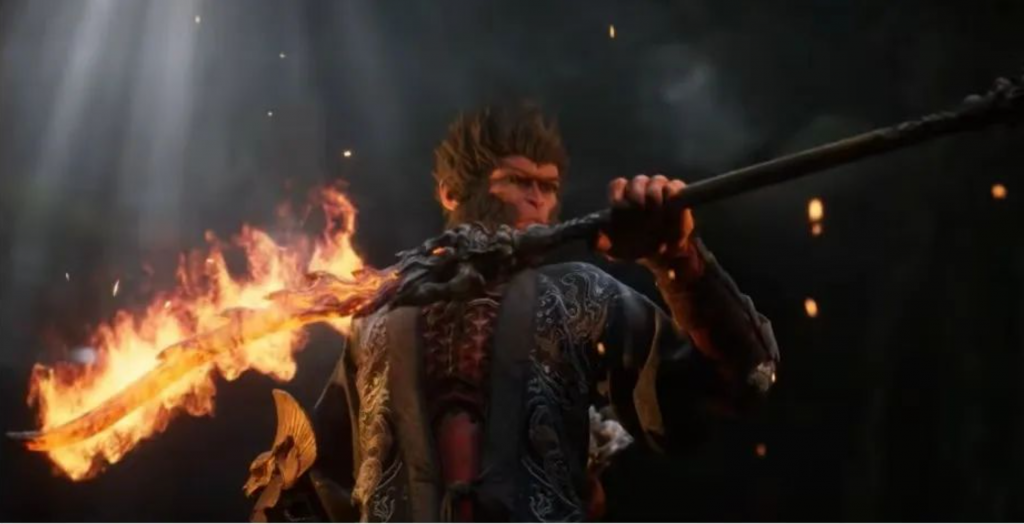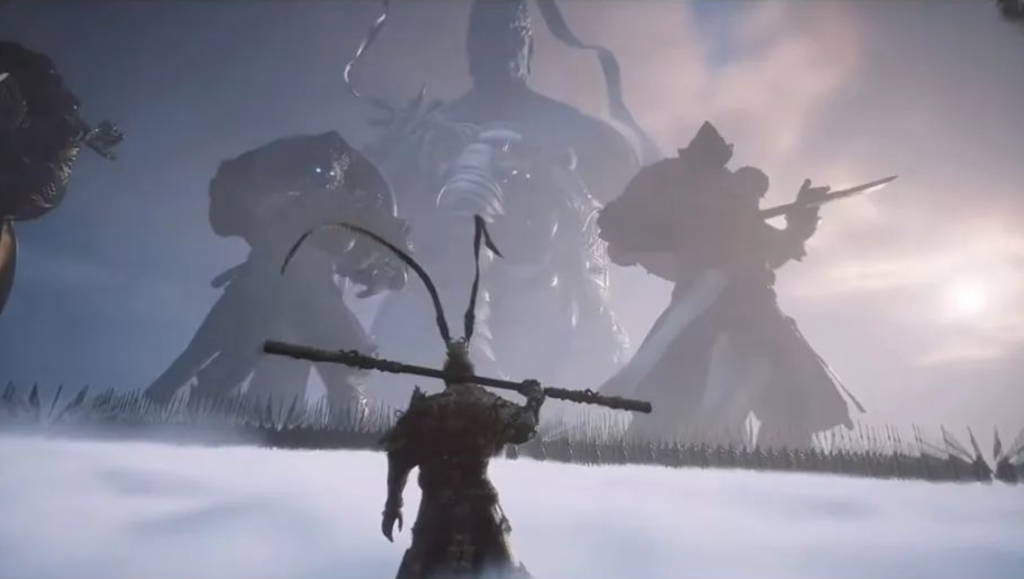The highly anticipated game Black Myth: Wukong has finally arrived, bringing the legendary Monkey King to life in a stunning new adventure. Based on the classic Chinese novel Journey to the West, the game immerses players in a world of gods, demons, and mythical creatures. To fully appreciate the game’s rich narrative and intricate gameplay, it’s essential to understand the source material. Fear not, players! This guide will help you navigate the celestial bureaucracy, decode the hidden identities of demons, and master the supernatural abilities that define this epic tale.

The Celestial Bureaucracy: Who Are These Gods?
At the start of Black Myth: Wukong, players are introduced to a host of celestial beings, including Erlang Shen (Yang Jian), the Four Heavenly Kings, and the Giant Spirit God. These figures are just the tip of the iceberg in the vast pantheon of Journey to the West. Let’s break down some key players:
- The Jade Emperor: The supreme ruler of heaven, overseeing all gods, immortals, and mortal affairs. Think of him as the CEO of the celestial realm.
- Erlang Shen (Yang Jian): A powerful warrior god with a third eye and a loyal hound. He’s often tasked with subduing rebellious spirits, including Sun Wukong.
- The Four Heavenly Kings: Guardians of the four cardinal directions, each wielding a unique magical weapon.
- The Giant Spirit God: A towering deity known for his immense strength, often sent to deal with troublemakers like Wukong.
- The Three Pure Ones: The highest deities in Taoism, often overshadowed by the Jade Emperor in Journey to the West.
- The Queen Mother of the West: Host of the蟠桃会 (Peach Banquet), a celestial event that plays a pivotal role in Wukong’s rebellion.
The celestial hierarchy mirrors the imperial bureaucracy of ancient China, with gods holding titles like “弼马温” (Keeper of Heavenly Horses), a position Wukong initially dismisses as insignificant but later realizes carries real responsibility.
Beware of Taoist Figures!
In Journey to the West, Taoist figures often symbolize corruption and misuse of power. For example:
- The Black Wind Cave’s Bear Demon: A Taoist practitioner who dabbles in alchemy and consumes elixirs, representing the darker side of Taoist practices.
- The Supreme Lord Laozi (太上老君): While revered as the founder of Taoism, Laozi is portrayed as a passive figure in the novel, more concerned with炼丹 (alchemy) than governing. His role in capturing Wukong and attempting to refine him in a furnace highlights his ambivalent nature.
Demons with Hidden Identities
Many of the demons Wukong encounters on his journey are not mere monsters but fallen or rogue celestial beings. Here are a few notable examples:
- The Yellow Wind Demon: Originally a yellow-furred marten from the foot of Buddha’s mountain, it fled after stealing sacred oil.
- The Yellow-Browed Demon: A mischievous disciple of the Buddha who stole divine treasures and caused havoc.
- The Lion, Elephant, and Garuda: These three demons are actually the mounts of the Bodhisattvas Manjushri, Samantabhadra, and the Garuda King, respectively. Their alliance with the Great Peng (a powerful bird demon) makes them formidable foes.
Understanding these demons’ backstories adds depth to the game’s narrative and highlights the interconnectedness of the celestial and demonic realms.
Mastering Supernatural Abilities

To succeed in Black Myth: Wukong, players must harness the extraordinary powers of Sun Wukong and other characters. Here’s a breakdown of key abilities:
- Shape-Shifting (七十二变): Wukong’s signature skill, allowing him to transform into various forms, from animals to inanimate objects. This ability is crucial for solving puzzles and outsmarting enemies.
- Cloud-Surfing (筋斗云): Wukong’s ability to ride a magical cloud, enabling swift travel across vast distances.
- Immense Strength: Wukong’s physical prowess, symbolized by his ability to wield the 如意金箍棒 (Ruyi Jingu Bang), a magical staff that can change size and weight.
- Fire and Wind Manipulation: Characters like the Red Boy (红孩儿) wield三昧真火 (Samadhi Fire), while others, like the Iron Fan Princess, control powerful winds with the芭蕉扇 (Banana Leaf Fan).
- Divine Weapons and Artifacts: Many characters possess unique tools, such as the金刚琢 (Diamond Bracelet) and定风丹 (Wind-Stabilizing Pill), which can turn the tide of battle.
Key Artifacts and Their Weaknesses
In Journey to the West, no artifact is invincible. Each has a weakness that can be exploited:
- The Golden Hoop (紧箍儿): Used to subdue Wukong, this artifact causes unbearable pain when activated. Despite Wukong’s immense power, he cannot remove it without the proper counter-spell.
- The Diamond Bracelet (金刚琢): A nearly indestructible artifact that can absorb any weapon or spell. However, it is vulnerable to the芭蕉扇 (Banana Leaf Fan).
- The Banana Leaf Fan (芭蕉扇): Capable of creating gale-force winds, it is neutralized by the定风丹 (Wind-Stabilizing Pill).
Understanding these dynamics is crucial for overcoming challenges in Black Myth: Wukong.
Final Tips for Players
- Study the Lore: Familiarize yourself with Journey to the West to fully appreciate the game’s references and narrative depth.
- Experiment with Abilities: Wukong’s shape-shifting and cloud-surfing skills are not just for combat—use them creatively to explore and solve puzzles.
- Watch for Weaknesses: Every enemy and artifact has a vulnerability. Pay attention to clues and adapt your strategy accordingly.
- Take Breaks: As the game advises, don’t forget to rest your wrists and enjoy the journey at your own pace.
Black Myth: Wukong is more than just a game—it’s a celebration of one of China’s greatest literary treasures. By diving into the rich mythology and mastering Wukong’s legendary abilities, players can embark on an unforgettable adventure through a world of gods, demons, and timeless wisdom. So, grab your staff, summon your cloud, and prepare to rewrite the legend of the Monkey King!

No comments yet.